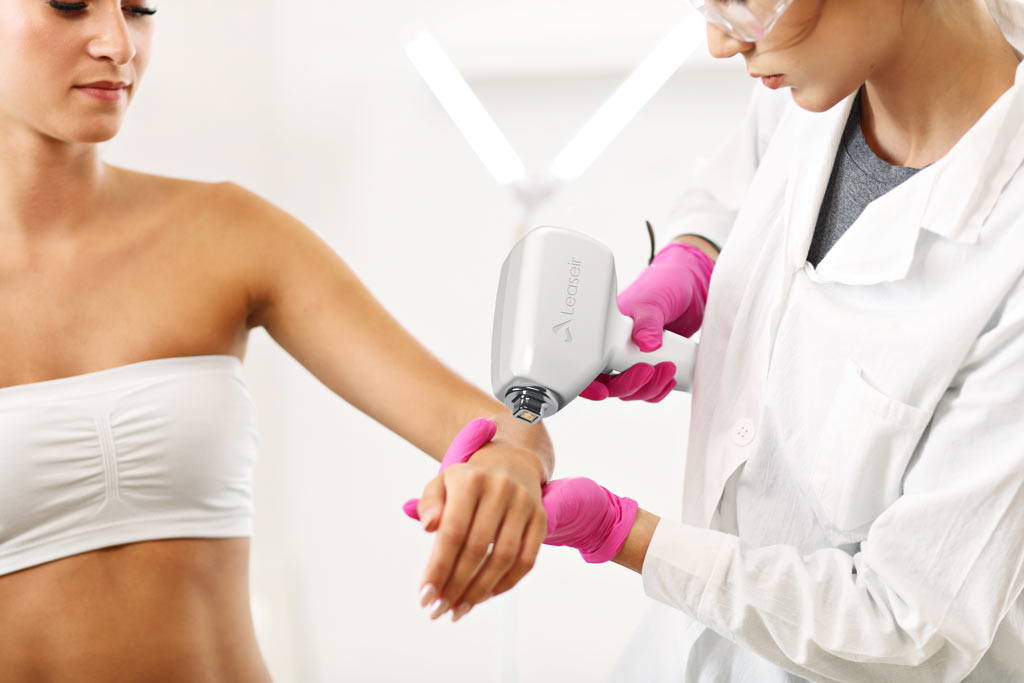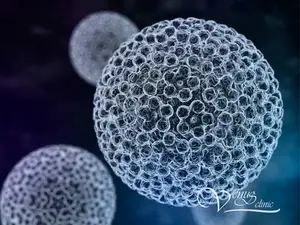
Hypertrichosis: Causes, Symptoms and Treatment
Hypertrichosis is a rare syndrome characterized by excessive hair growth anywhere on the body.
Hypertrichosis can be confused with hirsutism. Hirsutism is a more common condition in which women grow coarse hair in areas where male hair usually grows, such as the chin (see details below).
Causes of hypertrichosis
There are many theories about the causes of hypertrichosis.
Congenital hypertrichosis can be inherited. It appears to be caused by the genes that stimulate hair growth becoming abnormally active. In most people, the genes that caused abundant hair growth in the earliest ancestors of mankind are now inactive because humans do not need to cover their hair to stay warm.
In people with congenital hypertrichosis, these genes are activated even in the womb. The cause of this disease is still not known. There is some evidence that exposure to drugs such as minoxidil in utero may predispose to congenital generalized hypertrichosis. [2]
Prepubertal hypertrichosis is associated with increased levels of the male sex hormone in some patients.
However, acquired hypertrichosis, which develops later in a person's life, has a number of possible causes. Reasons include:
- malnutrition
- unhealthy diet or certain eating disorders such as anorexia nervosa
- certain medications and medications such as hair growth medications, certain immunosuppressants and androgenic steroids
- cancer and cell mutation
- autoimmune and infectious diseases affecting the skin.
- Hypertrichosis can sometimes be triggered by a condition called porphyria cutanea tarda, in which the skin is extremely sensitive to ultraviolet radiation.
If hypertrichosis appears in certain areas of our body, then the reason for this may be chronic skin diseases, such as lichen simplex, which is accompanied by repeated rashes, itching and scratching on a certain area of the skin. Increased blood supply (vascular) in one specific area of the body can also be the cause of this condition. Sometimes symptoms of hypertrichosis appear in the area where someone has been wearing a cast.
Drug-induced hypertrichosis
Medicines most often cause acquired generalized hypertrichosis.
- Antibiotics such as streptomycin
- Anti-inflammatory drugs such as benoxaprofen and corticosteroids
- Vasodilators (diazoxide, minoxidil, prostaglandin E1)
- Diuretics (acetazolamide)
- Anticonvulsants (phenytoin)
- Immunosuppressants (cyclosporine, mycophenolate mofetil)
- Psoralens (methoxypsoralen, trimethylpsoralen)
- Antiseptics (hexachlorobenzene)
- Chelators (penicillamine)
- Interferon-alpha
- Fenoterol
- EGFR inhibitors (cetuximab, panitumumab, erlotinib, gefitinib)
Although medication is usually the culprit, acquired generalized hypertrichosis can also occur with traumatic brain injury, juvenile hypothyroidism, juvenile dermatomyositis, acromegaly, malnutrition, and late HIV infection.
Symptoms
The main symptom of hypertrichosis is the presence of more hair than normal for a person's age, race, and gender. Hair can also appear in unusual places.
Not all hypertrichosis hairs are the same. With hypertrichosis, three different types of hair can appear:
Lanugo
Lanugos are long, thin and very soft hair. They are found on the body of a newborn baby. Lanugo hair is generally free of pigment and usually falls out a few weeks after birth. In people with hypertrichosis, lanugo hair will remain until it is removed.
Fluffy Hair
Vellus hair is usually short, soft and lightly pigmented. This hair can appear all over the body, except in areas where there are no hair follicles, such as mucous membranes, soles of the feet and palms.
Long hair
Long hair is the darkest of the three hair types. Long hair is usually thick, coarse and long. Their growth is caused by sex hormones and they are usually found on the face, armpits and groin.
In women with hirsutism, long hair often appears on the face, back, arms and chest.
With age, the severity of symptoms of hypertrichosis may increase or decrease.
Types of hypertrichosis
There are many types of hypertrichosis, which are classified according to how and when a person develops the condition.
Congenital lanuginosis
Fine lanugo hairs appear in the fetus as usual, but do not disappear after birth. Instead, hair continues to grow excessively in different areas of the body throughout a person's life.
Congenital hypertrichosis
Instead of being born with lanugo or vellus hair, a baby may have long hair at birth that grows throughout its life. Affected people often have thick, fully pigmented hair that covers the entire body, including the face.
Acquired hypertrichosis
Acquired hypertrichosis develops later in life. It largely repeats congenital hypertrichosis. Hair can be lanugo, vellus or long hair, and it can appear in small patches or all over the body.
Nonvoid hypertrichosis
Excessive hair growth in one or more areas of the skin. A typical example is a very massive and bushy monobrow, also known as a single brow.
Hirsutism
Hirsutism is often mistaken for hypertrichosis. Hirsutism affects up to 10% of women. Hirsutism is a term referring to women who develop coarse long hair in a typically masculine distribution of hair growth, such as the chin and chest. In women, hirsutism often develops due to hormonal imbalances.
Treatment
Electrolysis or laser hair removal may be recommended for long-term treatment.
Laser hair removal for hypertrichosis
Laser hair removal is the technique of choice for hypertrichosis due to its high efficiency and safety. Under the action of the laser, the hair follicles are selectively destroyed and the hair stops growing forever in this zone. Laser hair removal is carried out even for children, due to its high efficiency and safety. The most common areas of epilation in hypertrichosis are the areas of the legs, legs, arms, back. Specific areas for hypertrichosis epilation are:
- Laser hair removal for hands
- Laser hair removal for legs
- Laser back hair removal

Electrolysis
Electrolysis is less popular than laser hair removal, but it is in no way inferior in its effectiveness to laser hair removal. The disadvantages of electrolysis include the painfulness of the treatment, a high risk of complications. Electrolysis is the only method in cases of low melanin content in the hair, which makes it impossible to remove hair with a laser, namely when:
- vellus hair
- lanugo
- gray hair
Prevention of hypertrichosis
Since the causes of hypertrichosis are not completely known, it is difficult to talk about the full prevention of hypertrichosis. However, some people can reduce their risk of developing certain types of acquired hypertrichosis by avoiding:
- some immunosuppressants
- androgenic steroids
- preparations for hair growth
Do not self-medicate, consult your doctor before stopping any medication!
Sources used
- Hypertrichosis, www.medscape.com
- Kaler SG, Patrinos ME, Lambert GH, Myers TF, Karlman R, Anderson CL. Hypertrichosis and congenital anomalies associated with maternal use of minoxidil. Pediatrics. 1987 Mar; 79 (3): 434-6.






